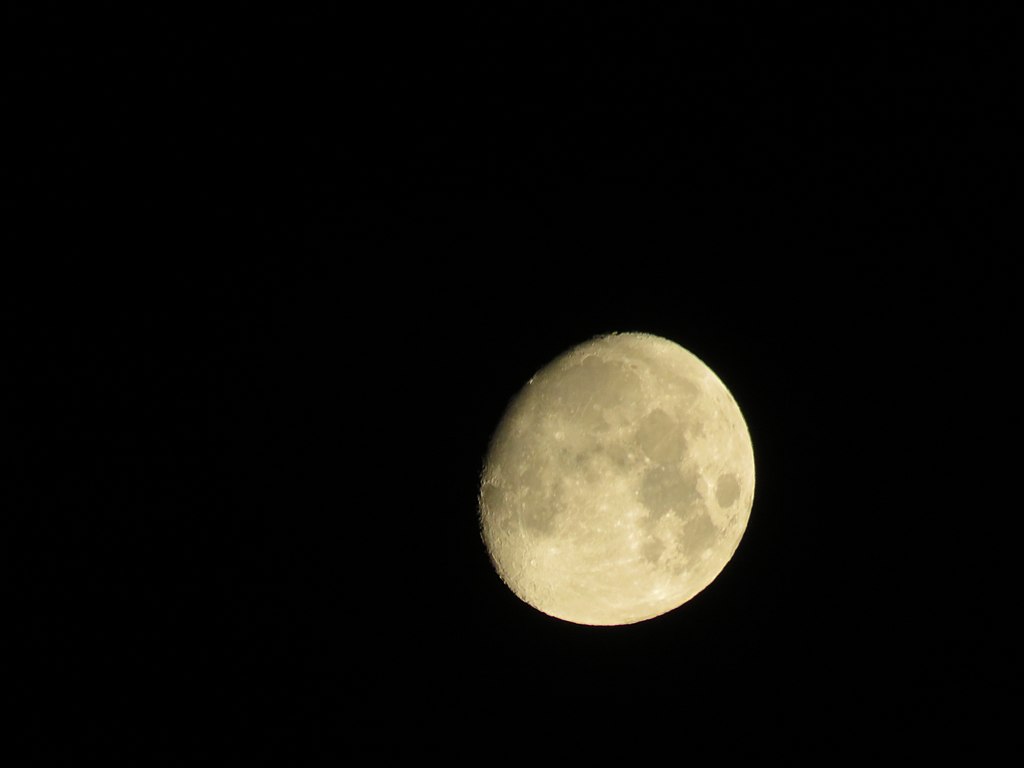The structure of the moon has perplexed astronomers for centuries before the advent of spacecraft. In the early 20th century, scientists were debating whether the moon was just a rocky object similar to Martian moons, or whether it had a more complex inner geology. Now, the debate has finally been settled.
According to the latest mathematical models, the moon has a fluid outer core and a solid inner core, similar to Earth’s. The inner core is made up of a metal with a density similar to that of iron and measures about 500 kilometers in diameter, which is about 15% of the Moon’s total diameter.

The Moon’s interior
Because we know the gravitational pull of the moon, and we also know it’s volume, we can calculate its average density. But that doesn’t really tell the whole story about what the moon is made from. We also sent landers to the moon and took photos of the lunar surface, piecing together what the crust is made from.
But that still doesn’t tell the whole story.
Since the 1960s, several missions have been sent to the Moon, including the famous Apollo missions. The Apollo astronauts not only walked on the Moon but also set up scientific experiments and brought back lunar rocks for analysis. These missions provided direct observations and samples that have been crucial in understanding the Moon’s composition.
The Apollo astronauts did something else: they left seismomenters on the moon. These seismometers offered the first serious clues regarding the interior of the moon and what the moon is made from. Now, a new seismometer brought the final piece of the puzzle.
“Our results question the evolution of the Moon magnetic field thanks to its demonstration of the existence of the inner core and support a global mantle overturn scenario that brings substantial insights on the timeline of the lunar bombardment in the first billion years of the Solar System,” the researchers wrote in their paper.
Seismics shows what’s inside the moon
Studying the inner composition of objects in the Solar System is best done through seismic data. Seismic waves (which are essentially acoustic waves) propagate differently through different materials. So these waves generated by moonquakes can reveal the inner structure of the moon, depending on what they’re passing through. The end result is a sort of geological X-ray.
India’s Chandrayaan-3, which touched down on the moon in August 2023, has detected the first lunar quake in over 50 years. However, the researchers at Côte d’Azur University in France didn’t have access to this data when they first embarked on this study, so they had to rely on old Apollo-era data. The challenge is that ancient data is low-resolution by today’s standard — too poor to determine the lunar core’s state.
Seeking a way forward, the researchers gathered additional data from space missions and lunar laser ranging experiments and created a profile of the moon’s features. This includes its density and variation in its distance from Earth, among other things. They then did modeling with different core types to find which matched best the observational data.
The researchers made several important findings. First, they found that denser material inside the moon falls towards the center, and less dense material rises upwards. This has been previously suggested by researchers as a way of explaining the presence of certain elements in volcanic regions of the moon. But that’s only one part of the picture.
The researchers also found that the lunar core is very similar to that of the Earth, with an outer fluid layer and a solid inner core. The core is about 500 kilometers in diameter, or 15% of the Moon’s width. Curiously, back in 2011, a team led by NASA scientists found a similar result using seismological techniques on Apollo data to study the lunar core. The fact that the two studies line up using two different techniques lends more credibility to this conclusion.
The moon’s interior still has some mysteries
While the finding brings some light to the moon’s structure, there are still many more mysteries that remain unsolved, such as what happened to its magnetic field.
Unlike Earth, the Moon doesn’t have active plate tectonics. This means its surface doesn’t get recycled through the kind of geological processes seen on Earth. But the moon did experience some changes.
Not long after it formed, the moon had a powerful magnetic field, which then began to decline about 3.2 billion years ago. The field was generated by motion and convection in the core.
More data about the moon could soon become available for research, as government agencies and private space companies are working on their new lunar missions. NASA hopes to send four astronauts back to the moon on the Artemis II mission in 2024, while private space companies such as ispace, Astrobotic and Intuitive Machines also have their own plans.
The research was published in the journal Nature.
This article originally appeared in May 2023 and was updated with new information.
Was this helpful?